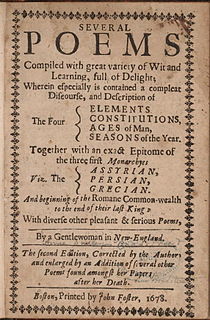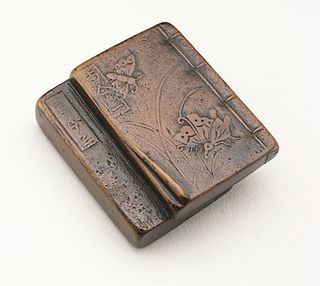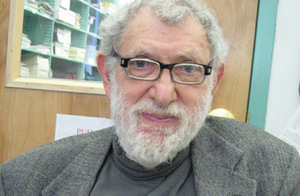This article has multiple issues. Please help improve it or discuss these issues on the talk page . (Learn how and when to remove these template messages)
|
Quantum sheep is the name given to a form of poetry. The poetry is generated by a random process implemented by writing words on the backs of sheep, then allowing the sheep to mingle.
A quantum sheep is simply a regular sheep that, under observation and with a poetic word written upon its back, can create random poems based on its movements and rest states. Multiple such sheep (15 in the original scenario), or a flock, are needed in order to contain enough words to form a poem and to introduce sufficient randomness.

Domestic sheep are quadrupedal, ruminant mammals typically kept as livestock. Like most ruminants, sheep are members of the order Artiodactyla, the even-toed ungulates. Although the name sheep applies to many species in the genus Ovis, in everyday usage it almost always refers to Ovis aries. Numbering a little over one billion, domestic sheep are also the most numerous species of sheep. An adult female sheep is referred to as a ewe, an intact male as a ram or occasionally a tup, a castrated male as a wether, and a younger sheep as a lamb.

Observation is the active acquisition of information from a primary source. In living beings, observation employs the senses. In science, observation can also involve the recording of data via the use of scientific instruments. The term may also refer to any data collected during the scientific activity. Observations can be qualitative, that is, only the absence or presence of a property is noted, or quantitative if a numerical value is attached to the observed phenomenon by counting or measuring.

Randomness is the lack of pattern or predictability in events. A random sequence of events, symbols or steps has no order and does not follow an intelligible pattern or combination. Individual random events are by definition unpredictable, but in many cases the frequency of different outcomes over a large number of events is predictable. For example, when throwing two dice, the outcome of any particular roll is unpredictable, but a sum of 7 will occur twice as often as 4. In this view, randomness is a measure of uncertainty of an outcome, rather than haphazardness, and applies to concepts of chance, probability, and information entropy.
The pattern of words produced by reading the words written on the back of these sheep is unpredictable. This is a consequence of using sheep not conscious of the intent of process. Advocates of the resulting poetic form claim that this unpredictability should be interpreted as uncertainty. Thus it has been asserted that the process of creating this poetry is connected to quantum mechanics, through supposed parallels with the uncertainty principle. [1]
Predictability is the degree to which a correct prediction or forecast of a system's state can be made either qualitatively or quantitatively.

Uncertainty refers to epistemic situations involving imperfect or unknown information. It applies to predictions of future events, to physical measurements that are already made, or to the unknown. Uncertainty arises in partially observable and/or stochastic environments, as well as due to ignorance, indolence, or both. It arises in any number of fields, including insurance, philosophy, physics, statistics, economics, finance, psychology, sociology, engineering, metrology, meteorology, ecology and information science.

Quantum mechanics, including quantum field theory, is a fundamental theory in physics which describes nature at the smallest scales of energy levels of atoms and subatomic particles.
The poetry itself is originally done in a style similar to the Japanese haiku in order to form the base words. Observers choose their own words from the resulting flock, without any particular form, to create new poems. Although the observers' results are somewhat light-hearted in nature it is considered a legitimate form of art. An example of the source may yield a general idea of what to expect from this method: [2]

Japanese people are a nation and an ethnic group that is native to Japan and makes up 98.5% of the total population of the country. Worldwide, approximately 129 million people are of Japanese descent; of these, approximately 125 million are residents of Japan. People of Japanese ancestry who live outside Japan are referred to as nikkeijin(日系人), the Japanese diaspora. The term ethnic Japanese is often used to refer to Japanese people, specifically Yamato people. Japanese are one of the largest ethnic groups in the world.
Haiku (俳句)
- The essence of haiku is "cutting" (kiru). This is often represented by the juxtaposition of two images or ideas and a kireji between them, a kind of verbal punctuation mark which signals the moment of separation and colours the manner in which the juxtaposed elements are related.
- Traditional haiku often consist of 17 on, in three phrases of 5, 7, and 5 on, respectively.
- A kigo, usually drawn from a saijiki, an extensive but defined list of such terms.
CLOUDS GRAZE THE SKY;
BELOW, SHEEP DRIFT GENTLE
OVER FIELDS, SOFT MIRRORS,
WARM WHITE SNOW.
The first project with quantum sheep transpired in 2002 under the direction of Valerie Laws, using the sheep of one Donald Slater from Northumberland. Her success in this endeavor eventually lead to a book related to the poetry extracted from such experiments. [3] Indeed, her methods were also copied by other would-be poets seeking to try something a little bit unique. This in turn created a new type of poetry known as quantum sheep poetry [4] that uses methods or concepts similar to Law's. One example from her book is listed below, taken from the publisher's site: [5]
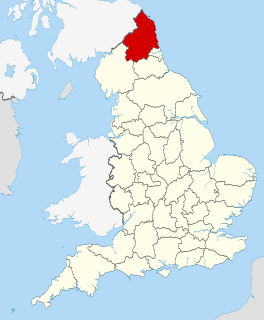
Northumberland is a county in North East England. The northernmost county of England, it borders Cumbria to the west, County Durham and Tyne and Wear to the south and the Scottish Borders to the north. To the east is the North Sea coastline with a 64 miles (103 km) path. The county town is Alnwick, although the County council is based in Morpeth.

An experiment is a procedure carried out to support, refute, or validate a hypothesis. Experiments provide insight into cause-and-effect by demonstrating what outcome occurs when a particular factor is manipulated. Experiments vary greatly in goal and scale, but always rely on repeatable procedure and logical analysis of the results. There also exists natural experimental studies.
"The Sound of No Music"
In life there is no music
To warn us of danger,
Or sudden love. No strings
Start sobbing, no shark-attack
Knife beats, no gothic
Heart-clutching crescendo
ell (sic) us, don’t go down those stairs!
The shocks
Of burglar in your bedroom, metal
Railing through your chest, bus
Driving through your car, all
Happen, like sudden joy,
To totally inappropriate soundtracks
Or none at all. Blackbirds practise
Their phrasing, soap operas bleat,
A toilet flushes, as our life changes
Or ends, as we think, more
Than our pre-cinema ancestors did,
How, how can this happen, and to me?
Laws considers the poetry a new type of scientific art, or sci-art. Her opinion is that the poetry has a solid connection to the science of quantum mechanics, as quoted [6] from an article:
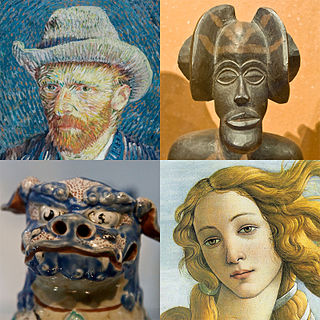
Art is a diverse range of human activities in creating visual, auditory or performing artifacts (artworks), expressing the author's imaginative, conceptual ideas, or technical skill, intended to be appreciated for their beauty or emotional power. In their most general form these activities include the production of works of art, the criticism of art, the study of the history of art, and the aesthetic dissemination of art.
Laws, who has degrees in English and theoretical physics, calls her project Quantum Sheep, arguing that it contains the principles of quantum mechanics -- notably the randomness, the influence of the observer on the observed, and the duality in the interchange of the sheep and clouds in the original poem.


